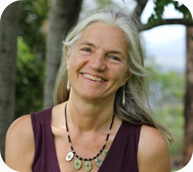Full Moon in Capricorn 2024 – right on the Solstice!
.

The Full Moon in Capricorn on Sat 22 June 2024 is the first of two Full Moons in Capricorn just a month apart, bringing the theme of this Full Moon into strong focus as we’ll have its cosmic invitation repeated next month.
The Full Moon in Capricorn highlights the work we do in the world, our ambitions in life and our willingness to take personal responsibility for how our lives unfold.
This Full Moon brings into focus the difference between our public and our private lives, inviting us to find a balance between the two opposing polarities of work and home. The spotlight may be on your career or business life, but it’s important to find that balance with your home life.
The Full Moon is exact on Sat 22 June 2024 at 11.07am Queensland time (AEST) at 1 Capricorn (the previous evening in the Americas). The best time for celebrations and ceremony in Australia will be the previous night while the energy is still building.
*
Online courses available at
Foundation and Intermediate level
Start today – Register now!
.
Having a birthday this month?
Find out what the year ahead holds for you
with a Zodiac Year Ahead Report
Forecast goes from this birthday to your birthday next year
Order now!


